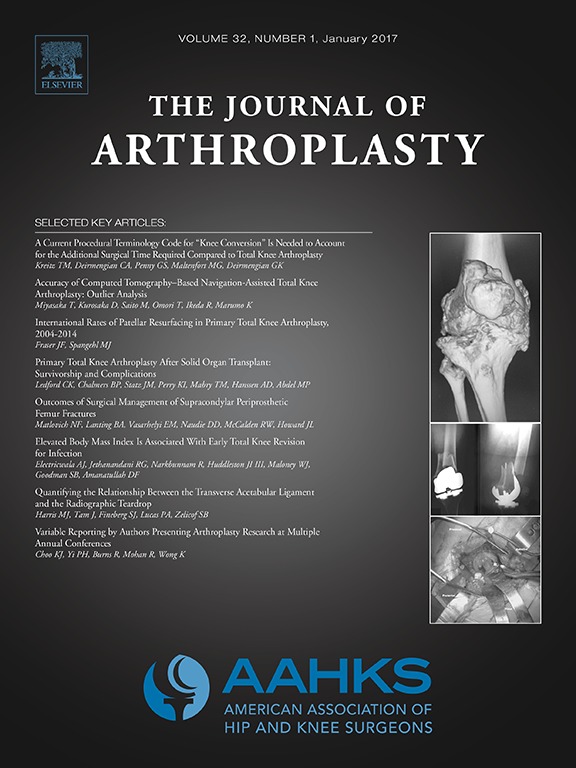
ARTHROPLASTY
Intramedullary canal irrigation may reduce fat emboli in females during TKA
J Arthroplasty. 2015 Mar;30(3):451-5.30 female patients scheduled for total knee arthroplasty (TKA) were randomized to undergo the procedure with or without intramedullary canal irrigation. The purpose of this study was to evaluate and compare the formation of fat emboli during the procedure between the two groups. Transesophageal echocardiography (TEE) was used to determine the grey-scale score and area ratio of fat emboli during the procedure. Hemodynamic parameters were also assessed. Results indicated that there was a significantly lower grey-scale score and area ratio in the irrigation group when compared to the conventional group specifically during preparation of the femoral and tibial canals. Groups did not significantly differ during any other phase of the procedure. Additionally, hemodynamic parameters were similar between groups during the procedure.
Unlock the full ACE Report
You have access to {0} free articles per month.Click below to unlock and view this {1}
Unlock NowCritical appraisals of the latest, high-impact randomized controlled trials and systematic reviews in orthopaedics
Access to OrthoEvidence podcast content, including collaborations with the Journal of Bone and Joint Surgery, interviews with internationally recognized surgeons, and roundtable discussions on orthopaedic news and topics
Subscription to The Pulse, a twice-weekly evidence-based newsletter designed to help you make better clinical decisions
Exclusive access to original content articles, including in-house systematic reviews, and articles on health research methods and hot orthopaedic topics
Or upgrade today and gain access to all OrthoEvidence content for just $1.99 per week.
Already have an account? Log in


Subscribe to "The Pulse"
Evidence-Based Orthopaedics direct to your inbox.
{0} of {1} free articles
Become an OrthoEvidence Premium Member. Expand your perspective with high-quality evidence.
Upgrade Now












































































